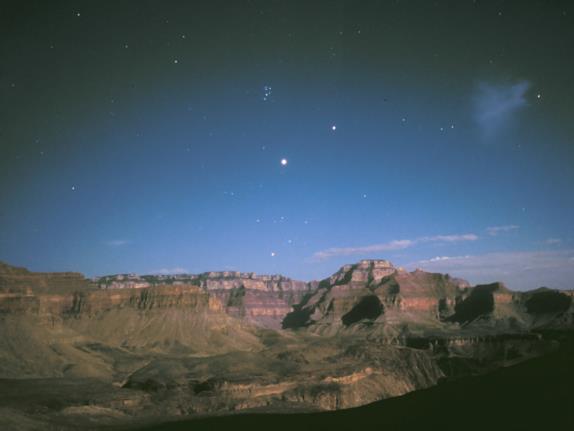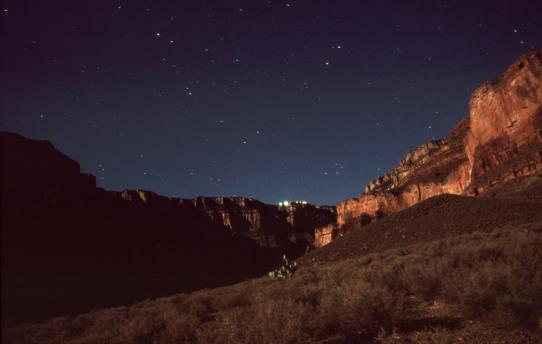
NavList:
A Community Devoted to the Preservation and Practice of Celestial Navigation and Other Methods of Traditional Wayfinding
From: Frank Reed
Date: 2023 Feb 6, 15:33 -0800
I wrote earlier:
"Aha! Yes, I agree. I very nearly mentioned that in my last post! The issue is especially severe in some digital photography. Brighter stars all end up appearing nearly the same; the pixels saturate, and they don't grow. In this photo the stars of Ursa Minor, for example, all look more or less the same and nearly blend in with other field stars."
I noticed some photos in the past few weeks that were immune from this problem. The stars show the expected appearance of a range or brightness, and that's because the photos are scans of old 35mm slides (film photos, not digital). Bright stars over-expose and bleed outward creating larger images for brighter stars better mimicking the appearance of the real constellations.
These photos were taken years ago and recently digitized by Tom Polakis who lives in Arizona and who kindly gave his permission to post them for NavList readers. Those of you on Facebook may want to friend/follow him to see some of his amazing astrophotography. Nice foreground scenery in these, too. Yes, Grand Canyon!
The sky is fairly bright in these images because he was shooting on moonlit nights to illuminate the scenery of the canyon.
Frank Reed









